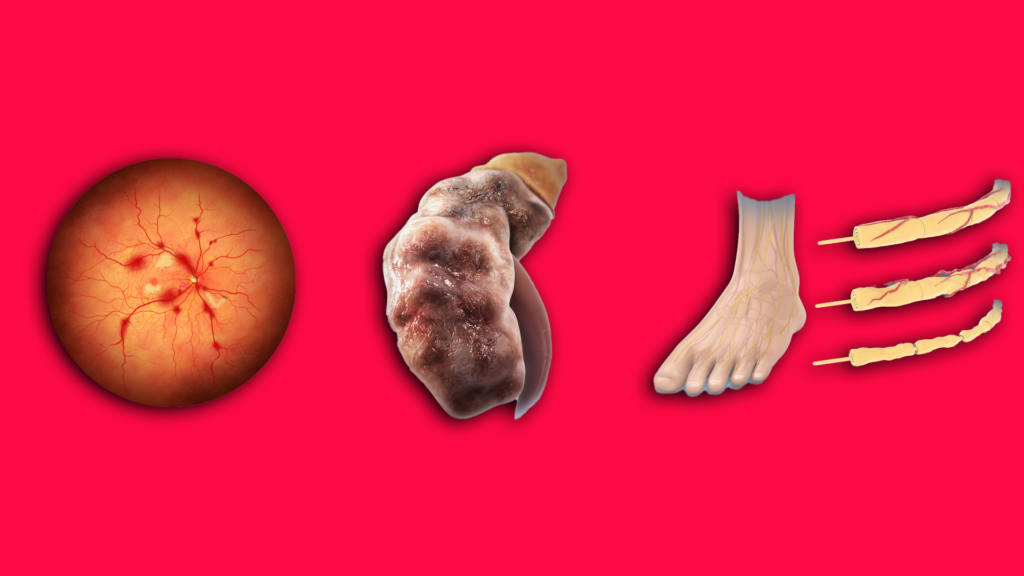Insulin is a hormone produced by the pancreas and released into the blood. Insulin helps our body utilize sugar and other starches. In diabetes, blood glucose (BG) levels are high because of the absence of insulin production (type 1 diabetes) or a relative deficiency of insulin plus insulin resistance (type 2 diabetes). Diabetes is managed by dietary changes, an increase in activity level, and medications including insulin. Depending on the type of diabetes, severity of diabetes, and certain other conditions which may coexist, insulin therapy is needed in many patients with diabetes. The goal is to keep BG levels in the normal range which reduces the risk of developing long-term complications of diabetes.
There may be times when your BG level may drop too low (hypoglycemia). For most people, BG <70 mg/dL is considered low BG. Generally, hypoglycemia is considered to be serious when blood glucose is less than 55 mg/dL or the patient has altered consciousness along with a low blood glucose reading. If untreated or prolonged, this may lead to brain damage or even death. Hypoglycemia may occur with certain diabetes medications (particularly sulfonylureas – such as glyburide, glimepiride, or glipizide) and/or insulin therapy.
Hypoglycemia may occur in patients with diabetes, when:
- You have skipped or delayed meal
- You have not eaten enough carbohydrates
- You have increased activity, compared to your normal activity
- You are sick
- You had consumed alcohol, without eating enough food
Hypoglycemia is very uncommon in patients without diabetes. Potential causes of nondiabetic hypoglycemia include reactive hypoglycemia (which may occur in individuals who have prediabetes or are at risk of developing type 2 diabetes), alimentary hypoglycemia (which may occur in patients who have undergone bariatric surgery) or insulinoma (very rare and usually benign tumors composed of β cells in the pancreas – the cells which normally make insulin)
If your blood glucose is too low, you may feel one or more of the following symptoms:
- Shaky
- Sweaty
- Hungry
- Dizzy
- Weak
- Nervous
- Anger
- Confusion
- Headaches
- Unconsciousness
The symptoms of low BG may vary from person to person and may change over time in the same person. Sometimes, there may be no symptoms at all. This is more common in patients with long-term diabetes with a history of recurrent hypoglycemia and can be quite dangerous.
Treatment of hypoglycemia (the rule of 15):
- • Eat or drink 15 g of carbs right away.
(E.g. 4 ounces (1/4 cup) of regular fruit juice, 4 ounces of regular soda pop (1/2 can),
4 glucose tablets, one tube of glucose gel, etc.). - Wait 15 minutes and then check your BG again. If BG is still <70 mg/dl, eat or drink another 15 grams of carbs. Repeat the above steps until your blood glucose is back to normal.
- If your next meal is > 1 hour away, eat a snack to maintain the glucose in the normal range until you eat your meal (see diagram below). This is important because the fast-acting glucose (like juice or candy) will raise BG for a few minutes, but BG may start to drop again unless a small snack is consumed.
Severe hypoglycemia:
If hypoglycemia is severe (< 55mg/dl) and is associated with altered consciousness, an emergency medicine called glucagon is recommended instead of oral glucose. A family member should administer glucagon either intravenously, subcutaneously, or via the nasal route.
Glucagon Preparations in the USA
Glucagon is a naturally occurring hormone that increases BG levels and is therefore basically an ‘anti-insulin.’ Glucagon is made by the pancreas, and it causes the release of glucose from the liver into the blood. Commercially available glucagon is identical to the natural glucagon, synthesized in the laboratory, and is available as a prefilled injection syringe or a nasal spray (see table below). When glucagon is given to a patient with severe hypoglycemia, it works immediately to increase BG levels within 1 to 2 minutes. If you are taking insulin, please make sure that people who are usually around you (family, friends, or co-workers) are familiar with glucagon and how to administer it, in case you become severely hypoglycemic.
(see our blog on Glucagon).
This information is for general knowledge & is not a substitute for medical advice your doctor recommends
Post Disclaimer
We are not your healthcare provider, and your use of this website does not establish a patient-client relationship. All the information contained on this website is for informational purposes only. No material on this site is intended to be a substitute for professional medical advice (diagnosis, treatment, testing or nutritional information). Always seek the advice of your physician or qualified healthcare provider with any questions you may have regarding medical or health-related conditions or treatment. Your healthcare provider knows your condition or situation well and can give you specific advice which would be appropriate for your condition/situation. Your healthcare provider can also guide you more accurately about injection techniques, dietary interventions and the use of medical technology that is most pertinent and suitable for you. Please do not disregard professional medical advice or delay in seeking it because of something you may have read on this website.

